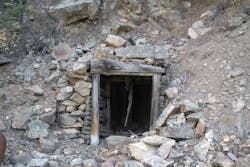U.S. DOE seeks RFIs on $500M Demonstration to convert Coal Mines into Low Emissions projects
The U.S. Department of Energy issued a Request for Information for the $500 million Clean Energy Demonstration Program on Current and Former Mine Land, which is funded by the Bipartisan Infrastructure Law.
The program will fund clean energy projects on mine land that will benefit the communities by creating good paying jobs and reducing carbon emissions, according to the DOE.
The former mines can include once operational coal, uranium, zinc and other element sites. There are estimates of as many as 500,000 abandoned mines in our nation, according to government estimates.
“Developing clean energy on mine lands is an opportunity for fossil fuel communities, which have powered our nation for a generation, to receive an economic boost and play a leadership role in our clean energy transition,” said U.S. Secretary of Energy Jennifer M. Granholm. “The investments in the President’s Bipartisan Infrastructure Law will help America's mining workforce apply their skills to grow and deploy cheaper, cleaner energy across the country.”
The program will support projects that demonstrate clean energy technologies, including solar, microgrids, geothermal energy direct air capture, fossil-fueled generation with carbon capture, utilization and sequestration, energy storage and advanced nuclear, on mining sites. Two of the clean energy projects under the program will have to include solar energy.
DOE is seeking feedback from a wide range of stakeholders, including industry, community organizations, environmental justice organizations labor unions, and state and local governments. Public input is sought on how to design the program such that it will best encourage private-sector investment in similar projects.
The selected projects will chart a course to navigate federal, state, and local rules and regulations for siting and grid interconnection, mine remediation, post-mining land use and environmental safety.
These mine land conversion to clean energy projects will be undertaken with the goal of replication across the country. As per an EPA analysis, there are approximately 17,750 mine land sites across 1.5 million acres in the U.S. Once all the mining sites are converted, up to 89 GW of clean electricity will be generated, sufficient to power millions of homes in the U.S.
Additionally, the program will contribute to the Biden-Harris Administration’s Interagency Working Group on Coal and Power Plant Communities which invests in the revitalization of hard-hit energy communities. It will also advance the Justice40 Initiative, aimed at delivering 40% of the benefits from clean energy to disadvantaged communities.
The Bipartisan Infrastructure Law also provides $11.3 billion in grant funding for abandoned mine land to eligible states and Tribes to address environmental hazards and pollution due to past coal mining.
About the Author
EnergyTech Staff
Rod Walton is head of content for EnergyTech.com. He has spent 17 years covering the energy industry as a newspaper and trade journalist.
Walton formerly was energy writer and business editor at the Tulsa World. Later, he spent six years covering the electricity power sector for Pennwell and Clarion Events. He joined Endeavor and EnergyTech in November 2021.
He can be reached at [email protected].
EnergyTech is focused on the mission critical and large-scale energy users and their sustainability and resiliency goals. These include the commercial and industrial sectors, as well as the military, universities, data centers and microgrids.
Many large-scale energy users such as Fortune 500 companies, and mission-critical users such as military bases, universities, healthcare facilities, public safety and data centers, shifting their energy priorities to reach net-zero carbon goals within the coming decades. These include plans for renewable energy power purchase agreements, but also on-site resiliency projects such as microgrids, combined heat and power, rooftop solar, energy storage, digitalization and building efficiency upgrades.
